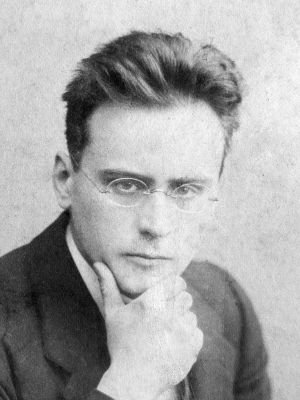

Anton Webern 1912 © Wikimedia Commons
Anton Webern
Hardly anywhere in music history is there greater contrast between the concise external form and the inner richness of an oeuvre than in the case of Anton Webern (1883-1945). In more than 30 years of composing, he left behind 31 works, which he himself acknowledged as valid, and which collectively fill 4 CDs. These 31 operas are characterised by immense concentration, constructive density and expressive richness and have made Webern one of the most influential composers of the 20th century.
Born into a family of Austrian nobility and civil servants, Webern first studied musicology, but in the autumn of 1904, he started taking composition lessons with Arnold Schönberg, who at that time was on the verge of opening doors to a new music. Schönberg's influence on his composition student cannot be overstated. Through Schönberg, Webern also met Alban Berg, the third master of the so-called Second Viennese School, with whom he shared a lifelong friendship. Webern first created a series of instrumental works, expressionist miniatures of unique expressivity, then moved on to songs, and in the 1920s adopted Schönberg's twelve-tone method as the basis of his creative work.
Webern spent almost his entire life in and around Vienna. In the course of the 1920s, he was gradually able to gain a foothold as a conductor and now received a certain amount of attention as a composer, at least in expert circles. The rise of the National Socialists altered Webern's life immensely. Many Jewish friends were forced to emigrate, and Webern's own work was considered degenerate by the National Socialists. His economic situation became increasingly precarious. After the end of the war, his prospects seemed to have improved, but Webern would not live to see the era when he was recognised. On 15 September 1945, as a result of a misunderstanding, he was shot in the dark in front of his house.
As of: June 2015
